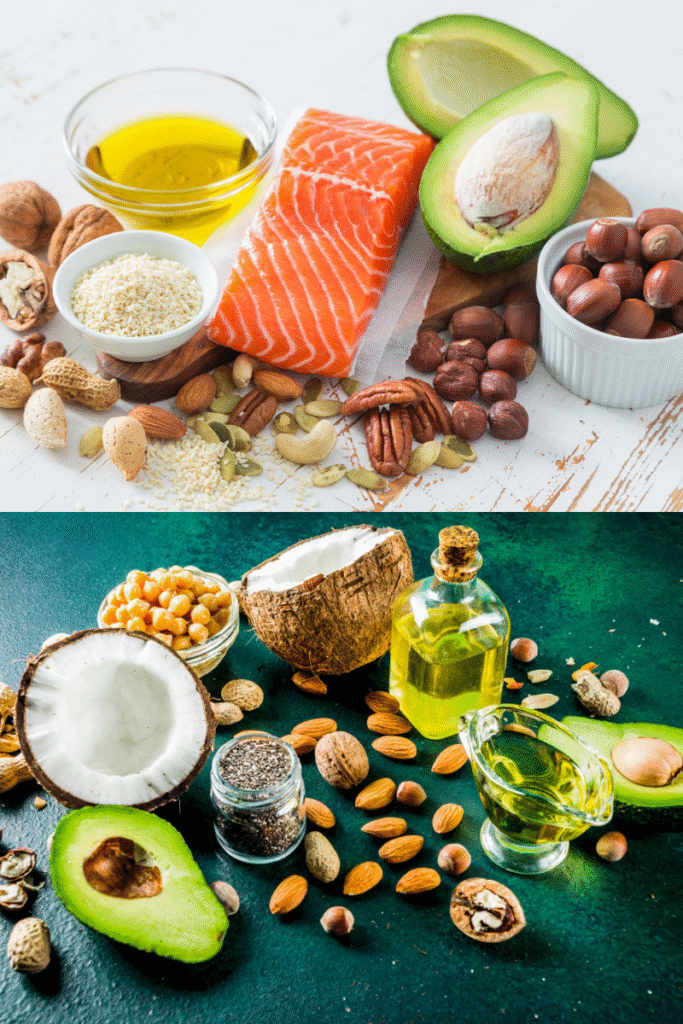Let’s talk about the menopause metabolic makeover—because if you’re in midlife and wondering why your jeans are suddenly tighter, you’re not imagining things.
Remember when you could polish off a double cheeseburger, fries, and a soda and still slip into your skinny jeans the next morning without a second thought? Now, simply breathing near a cookie feels like it adds inches to your waistline. Welcome to the magical mystery tour that is your midlife metabolism. If you’re feeling like your body has shifted into energy-saving mode, storing fat like it’s preparing for a long winter’s nap—you’re definitely not alone.
The thing is, your metabolism hasn’t betrayed you. It’s just operating under a new rulebook, one that doesn’t get mailed to you when your periods start ghosting. Between shifting hormones, aging muscles, and stress stacking up like laundry, your body’s engine simply needs new fuel, better maintenance, and a fresh driving strategy. So buckle up, friend. We’re going to decode what’s happening and serve up real, do-able strategies to help your body start firing on all cylinders again.
What Actually Happens to Our Metabolism During Menopause
Here’s what’s really going on under the hood: As we age, our basal metabolic rate naturally dips. That means your body burns fewer calories just existing—yes, even while scrolling through Netflix trying to remember what you were watching. Now toss menopause into the mix and you’ve got a hormonal cocktail that slows metabolism even further. The big player here? Estrogen. It’s not just about fertility—it also affects how your body regulates fat, glucose, and energy. When estrogen levels drop, everything from muscle mass to insulin sensitivity takes a hit.
Now toss menopause into the mix and you’ve got a hormonal cocktail that slows metabolism even further. The big player here? Estrogen. It’s not just about fertility—it also affects how your body regulates fat, glucose, and energy. When estrogen levels drop, everything from muscle mass to insulin sensitivity takes a hit.
That’s why weight gain during menopause, especially around the midsection, isn’t about lack of discipline—it’s biology. And worse? Dieting too harshly can actually make it worse, shrinking muscle instead of fat, which makes your metabolism even slower. The fix? Understanding your new hormonal terrain and working with it instead of declaring war on your waistline.
Spoiler: It’s totally possible—with a few smart swaps and habits.
1. Eat More Protein (Seriously)
Here’s a truth bomb most diets don’t tell you: Protein is your metabolism’s secret weapon, especially during and after menopause. Your body works harder to digest protein than carbs or fats—a process called the thermic effect of food. That means you actually burn more calories just by eating protein-rich foods. Plus, protein helps maintain and build muscle, which is key since we naturally lose muscle as we age (thanks again, estrogen).
But let’s be real—this doesn’t mean eating a steak the size of your face at every meal. It means intentionally adding 25–30 grams of protein at each sitting. Think: Greek yogurt with chia seeds for breakfast, a chickpea and tuna salad for lunch, and grilled salmon with quinoa for dinner. Snacking on boiled eggs, cottage cheese, or edamame can keep you full longer and reduce those late-night snack attacks. Trust me, I haven’t raided the cookie jar since I upped my protein—and that’s saying something.
2. Resistance Training = Fountain of Youth
Cardio’s great for heart health, but if you’re leaning on the treadmill to drop pounds post-50, you’re fighting an uphill battle in flip-flops. What your body really needs is strength training. Lifting weights—even light ones—builds lean muscle mass. And muscle is like metabolic gold: the more of it you have, the more calories you burn while sitting, sleeping, or even stress-scrolling Instagram.
Midlife muscle loss is a sneaky culprit behind weight gain and energy dips. Studies show that women who incorporate strength training just two to three times a week maintain more muscle and lose more fat than those doing cardio alone. And no, it won’t make you bulky—it’ll make you strong, balanced, and less likely to throw your back out while hauling groceries.
Start simple: bodyweight squats, resistance bands, or lifting light dumbbells during your favorite show. Bonus: You’ll feel like a superhero when opening jars is suddenly…easy again.
3. HIIT Me Baby One More Time
Long, slow cardio sessions have their place—but High-Intensity Interval Training (HIIT) is the Beyoncé of efficient workouts. It involves short bursts of intense activity (like fast walking, dancing, or stair climbing) followed by a brief recovery. This type of training helps you torch calories, even after the workout is over, thanks to a little thing called EPOC—excess post-exercise oxygen consumption. Basically, your metabolism keeps humming long after your sweat session ends.
And here’s the kicker: HIIT workouts don’t need to last an hour. Ten to twenty minutes is enough. Start with a walk: go hard for 30 seconds, slow down for a minute, and repeat for 15 minutes. Or try a fun dance video on YouTube—anything that gets your heart pumping and feels doable.
Midlife hack? Treat HIIT like espresso: short, energizing, and a little goes a long way. You’ll boost fat loss, energy, and even mood—without spending hours at the gym.
4. Sleep: The Underrated Superpower
You might think metabolism is all about what you do—eat, move, lift. But what about what you don’t do? Like… sleep. Lack of quality sleep messes with two key hormones: ghrelin (which makes you hungry) and leptin (which tells you you’re full). When they go out of whack, cravings kick in, appetite spikes, and willpower nosedives.
Menopausal sleep disruptions—night sweats, anxiety, racing thoughts—make this even harder. And the kicker? Chronic sleep loss also lowers your resting metabolic rate.
Here’s the fix: Create a sleep sanctuary. Think blackout curtains, cooling pillows, magnesium glycinate supplements, or even guided sleep meditations. If night sweats are wrecking your Zzzs, talk to a menopause specialist—don’t just tough it out. Poor sleep affects everything from heart health to waist size.
Getting solid rest isn’t laziness. It’s a radical act of self-care—and one that makes everything else on this list work better.
5. Water is Your (Midlife) BFF
 Water isn’t just about hydration—it’s a key player in metabolism. Your body needs it to process calories, flush toxins, regulate temperature, and even curb cravings. Yet most of us are walking around mildly dehydrated, confusing thirst for hunger and wondering why our energy feels like a soggy napkin.
Water isn’t just about hydration—it’s a key player in metabolism. Your body needs it to process calories, flush toxins, regulate temperature, and even curb cravings. Yet most of us are walking around mildly dehydrated, confusing thirst for hunger and wondering why our energy feels like a soggy napkin.
And let’s not forget: hormonal changes during menopause can lead to dry skin, fatigue, and slower digestion—all of which are worsened by dehydration.
Start your day with a tall glass of water—before coffee. Keep a cute bottle nearby at all times (yes, you can have one in every room). If plain water is boring, infuse it with citrus, mint, or berries. Herbal teas count too.
Feeling stuck in a mid-afternoon slump? Try water before caffeine. You might be surprised how much better you feel just by upping your H2O game. Hydration: the most underrated metabolism hack in the book.
6. Explore Hormone Therapy (With a Pro)
Hormone therapy (HT) is often seen as a last resort for hot flashes, but it’s much more than that. Research shows it may help regulate body fat, improve insulin sensitivity, and reduce abdominal weight gain—especially when started during the early stages of menopause.
But this isn’t one-size-fits-all. There are different types, doses, and delivery methods—from patches to pills to creams. That’s why a menopause-literate provider is your best ally here.
Not everyone is a candidate for HT, and that’s okay. But if you’re experiencing intense symptoms—fatigue, sleep loss, mood swings, stubborn weight gain—it’s worth the conversation. Don’t suffer in silence because of outdated fears or stigma. Your quality of life matters, and managing hormones wisely can be a game-changer for metabolism, mood, and beyond.
Midlife isn’t about enduring—it’s about evolving. And sometimes, evolving means getting a little hormonal backup.
7. Fat Isn’t the Enemy (Anymore)
Remember the 90s when “low-fat” everything was all the rage? Yeah… turns out, we got that one wrong. Healthy fats are essential for hormone production, brain health, and—you guessed it—metabolism. In fact, including healthy fats in your meals can help stabilize blood sugar, reduce cravings, and keep you full longer.
essential for hormone production, brain health, and—you guessed it—metabolism. In fact, including healthy fats in your meals can help stabilize blood sugar, reduce cravings, and keep you full longer.
Think avocados, walnuts, chia seeds, olive oil, and salmon. These fats also have anti-inflammatory benefits, which is crucial since menopause can increase inflammation in the body (another metabolism-slower).
Try this: add half an avocado to your toast, drizzle olive oil over roasted veggies, or snack on almonds instead of chips. You’re not being “naughty”—you’re being nourished. Fat doesn’t make you fat. Processed junk and hormonal chaos do.
Want even more strategies for managing weight gain during menopause? Our article The Midlife Kitchen: Foods That Ease Perimenopause Symptoms offers a collection of recipes and meal ideas that not only gives your metabolism a makeover, it also helps with hormonal symptoms.
Reclaim your relationship with food and fuel your body in a way that honors its wisdom—not punishes it.
8. Bring the Heat—Literally
Let’s spice things up—literally. Capsaicin, the compound that gives chili peppers their fiery kick, has been shown to boost metabolism and increase fat oxidation. That means your body burns a few more calories, even at rest, after eating spicy foods.
But it’s not just about the burn. Spicy food can curb appetite, enhance digestion, and even elevate mood thanks to the endorphin release that comes with a little culinary heat.
Don’t love spice? Start slow: a sprinkle of cayenne in your smoothie, chili flakes on your eggs, or hot sauce on your tacos. Every little bit helps—and bonus, your taste buds will thank you.
Midlife is the perfect time to awaken your senses. And sometimes, the path to feeling more alive starts with a little kick on your plate.
In Conclusion: You’re Not Broken—You’re Rebuilding
Here’s your permission slip to stop blaming yourself. Your body isn’t failing—it’s changing. And you don’t need to out-diet, out-punish, or out-hustle it. You need to tune in, support it, and maybe flip it a gentle middle finger when it refuses to cooperate (with love, of course).
With the right mix of food, movement, sleep, hydration, and mindset, your metabolism can work with you again—not against you. You don’t need to chase your 25-year-old self. You just need to back yourself as the woman you are now: strong, wise, and rising.
Midlife isn’t a crisis—it’s a comeback.
Now your turn:
- Tag your midlife bestie.
- Share this with someone who needs a laugh (and a cooling towel).
And remember—sisterhood over shoulds, always.
Additional Sources:
Harvard Health Publishing – “The truth about menopause and weight gain”: This article from Harvard Medical School provides a clear explanation of the hormonal changes during menopause and how they can contribute to weight gain and changes in metabolism. It offers insights into why these changes occur and what women can do to manage them.






